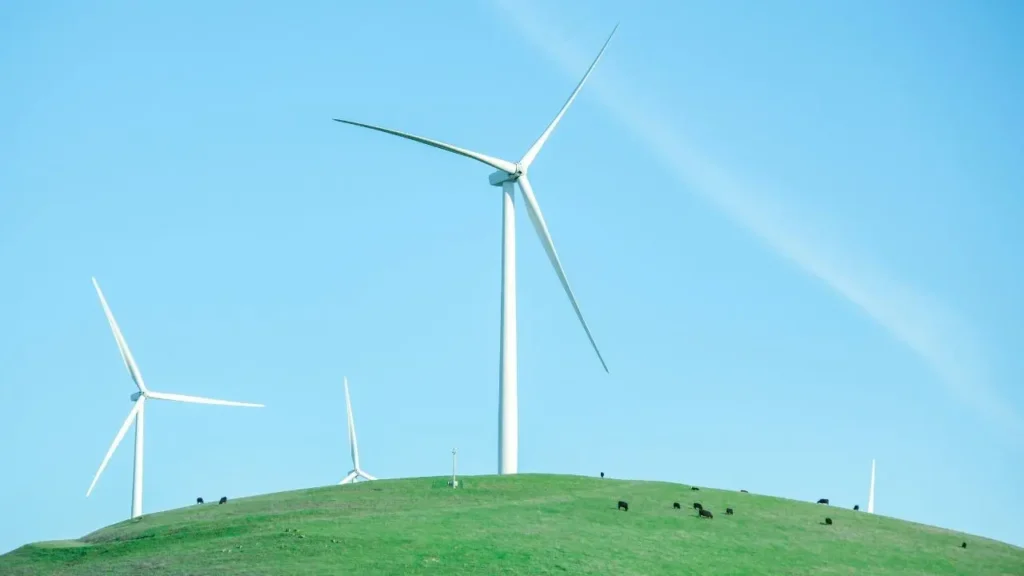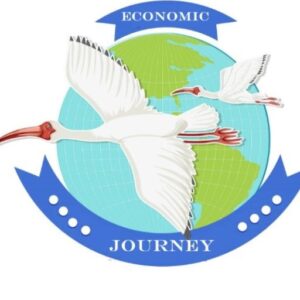
The green economy is presented as a new approach to development that reconciles economic growth and environmental preservation, in contrast to the traditional approach in which environmental objectives have often been presented as contradictory to economic goals.
Thus, the concept of a green economy does not necessarily reject economic growth, but rather seeks to promote growth that is compatible with ecological sustainability.Besides environmental sustainability, the green economy should promote social equity.The major challenge in moving economic development towards sustainability is to take into account growing ecological scarcity.
Definition of the green economy
The green economy is an economy that aims to improve human well-being and reduce long-term inequalities, while protecting future generations from major environmental risks and ecological scarcities. It is a low-carbon, resource-efficient economy that facilitates social integration and protects biodiversity and ecosystem services.The aim is to promote a just transition towards ecologically sustainable economies and societies, which generates the creation of decent jobs and an improvement in the living conditions of the most disadvantaged populations.
Please note thatThe concept of a green economy is based on the assumption that there is no trade-off between environmental sustainability and economic progress
The means of the green economy
The green economy is an approach aimed at implementing and realizing the sustainable development process. It includes means that are primarily focused on production and the company’s response. These means are described as follows:
The circular economy
Circular economy is a system of production, exchange and consumption which aims to:
- Optimize the use of resources at all stages of the life cycle of a good or service, in a circular logic;
- Reduce the environmental footprint;
- Contribute to the well-being of individuals and communities.
The transition to a circular economy requires changes in all spheres of the economy, whether on the supply side of products and services (resource extraction, production, processing and distribution sectors) or on the consumption side (behavioral changes). Finally, this transition must also focus on efficient waste management by adopting an orientation allowing the transition from the linear model to the cyclical model inspired by the cycle and closed loop model of nature where waste can become possible inputs in a secondary phase of production.
Clean technologies
Clean technologies are defined as all products, services, and processes that save resources or cause less environmental damage. They are defined as follows:
- Environmental protection activities that prevent, reduce or eliminate pollution or other environmental degradation;
- Resource management activities that result in more efficient use of natural resources, thus avoiding their depletion;
- The use of products that have been adapted to consume significantly fewer resources and energy than the quantities established in the industrial standard.
Energy efficiency (See article Energy transition)
The energy transition is the set of transformations of the energy production, distribution and consumption system carried out in a given territory to make its development more sustainable and ecological. It aims to transform the energy system in order to reduce its environmental impact and, above all, the resulting greenhouse gas emissions.
Eco-responsible practices
The concept of “eco-responsible business practice” in business is defined as one of the Sustainable Development Action Plans: “An eco-responsible management practice, such as improving energy efficiency and waste management, social inclusion, accident prevention or profitability control, aims to respond to a social, environmental or economic issue.
Here are some examples of eco-responsible business practices for companies:
- Optimization of transport and reduction of greenhouse gas emissions;
- Reduction in the consumption of energy, water, natural materials, fuel and products considered dangerous or harmful to the environment;
- Responsible sourcing through the purchase of more ecological products from local or social economy businesses;
- Adoption of participatory management practices involving consultation with employees and partners;
- Improving employee health and safety;
- Making efforts to hire a diverse workforce;
- Strengthening mechanisms for sound governance and ethics;
- Dissemination of transparent and fair information;
- Reduction of negative impacts on the natural environment and biodiversity.
The objectives of the green economy
The balance of natural capital
It consists of not consuming more than what natural ecosystems can provide. That is to say, the use relates only to the resources that the Earth is capable of reforming.
The equitable distribution of resources
The pursuit of social justice by ensuring that natural resources are fairly distributed among different populations and between generations.
Changing production and consumption patterns
The adoption of more responsible production methods and consumption methods that are more respectful of environmental issues.
Relationship between green economy and sustainable development
Green growth would be a state of gradual transition towards the green economy, which in turn would represent a state of transition towards sustainable development.
Green growth, the circular economy, energy efficiency and clean technologies represent the means to lay the foundations of a green economy which constitutesan approach to implementing sustainable development, or a path to achieving it.
Green growth
also known as clean growth, it is defined as sustainable economic growth minimizing its environmental footprint and ensuring the sustainability of natural resources, which implies the maintenance of stocks of natural capital over time.
Clean growth should not only minimize the environmental footprint, but also reduce human pressures on the environment sufficiently so that stocks of natural capital can be maintained.
It is growth that promotes economic development while ensuring that natural assets continue to provide the resources and environmental services on which our well-being depends.
It is based on the efficient use of natural resources, which is clean because it minimizes pollution and environmental impacts, and which is resilient because it takes into account natural risks and the role of environmental management and natural capital in preventing natural disasters.
Furthermore, green growth policies must include:
- Optimizing productivity through greater efficiency to reduce the use of natural resources, energy consumption and waste production;
- Strengthening investor confidence through a clearly defined environmental policy;
- Opening up new markets by stimulating demand for environmentally friendly products, services and technologies;
- Reducing the risks of economic crisis caused by the reduction of raw material resources, by pollution that has become uncontrollable (see plastic in the oceans) or even by climatic events.
Green economy
Shebrings together two types of activities: traditional activities carried out using less polluting or less energy-consuming processes, and eco-activities, whose purpose is the protection of the environment or the management of natural resources.is inclusive green growth, meaning that growth must be consistent with the principles of environmental sustainability without compromising social equity.
Moreover, in a green economy, growth is stimulated in particular by socially responsible investments which:
- Reduce CO2 emissions and pollution;
- Increase the productivity of natural materials;
- Prevent the loss of biodiversity and ecosystem services.
Sustainable Development
Development is sustainable if it meets the needs of the present without compromising the ability of future generations to meet their own needs. Maintaining capital stocks over time is the only way to enable future generations to enjoy a quality of life equivalent to that of the present generation.
Thus, sustainable development, which is based on a long-term vision, remains the ultimate objective of the green economy, which includes the means to reconcile the economic and environmental dimensions of sustainable development, without ignoring the social aspects.
Conclusion
Human activities are irreversibly disrupting the natural order of our planet, resulting in: Global rise in temperatures and sea levels, air pollution and ocean acidification, desertification, deforestation and the rate of species extinction.
If we are to avoid the degradation and complete depletion of the resources necessary for life, the world must no longer pursue economic growth at all costs. It is necessary to shift to an economic model that leaves more room for people’s well-being, is more sustainable, more socially inclusive and equitable, and preserves our planet’s natural resources instead of depleting them.

**mindvault**
mindvault is a premium cognitive support formula created for adults 45+. It’s thoughtfully designed to help maintain clear thinking
Can you be more specific about the content of your article? After reading it, I still have some doubts. Hope you can help me. https://accounts.binance.com/register-person?ref=IXBIAFVY
Thank you
I will do my best to live up to your expectations.
Thank you for your sharing. I am worried that I lack creative ideas. It is your article that makes me full of hope. Thank you. But, I have a question, can you help me?
thanks